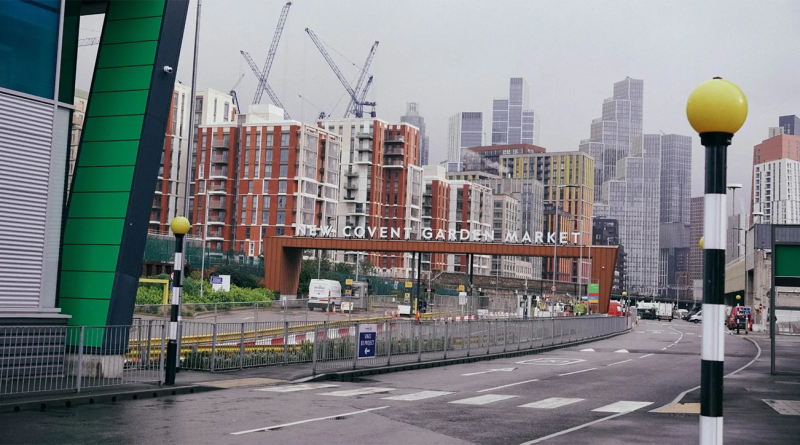How a $1.1 Billion Secret London Market Fuels Michelin-Starred Cuisine
London’s culinary scene is a globally celebrated phenomenon, renowned for its Michelin-starred restaurants, luxury hotels, and gastronomic innovation. But what few diners realize is the secret backbone of this success: a $1.1 billion midnight market that operates while the city sleeps. This nocturnal hub provides elite establishments like Harrods, Claridge’s, and a constellation of Michelin-starred venues with access to the finest ingredients before dawn.
The operations of London’s midnight market
Operating under the cover of night, London’s midnight market is an intricate ecosystem of suppliers, buyers, and distributors. The action begins as early as 10 p.m., with farmers, fishmongers, and specialty ingredient vendors arriving to set up their stalls. By midnight, the market hums with activity as chefs, purchasing managers, and distributors navigate the maze of offerings.
Every night, the market becomes a nexus of diverse ingredients, from local seasonal produce to rare delicacies imported from around the world. A vital part of its success is the flawless coordination of logistics. International shipments are timed to arrive just before trading begins, ensuring freshness, while local farmers bring their harvest directly to the market.
Buyers from London’s top-tier establishments flock to the market, knowing that the competition is fierce. The freshest seafood, the ripest fruits, and the rarest truffles are often claimed within minutes. This high-pressure environment underscores the market’s role as a vital artery in the city’s luxury dining supply chain. By 5 a.m., as the market winds down, trucks are loaded, and the finest ingredients are en route to kitchens across the city.
Impact on London’s luxury dining scene
The midnight market’s influence extends far beyond its bustling stalls, shaping the menus and reputations of London’s most celebrated dining establishments. Restaurants with Michelin stars, luxury hotels like Claridge’s, and iconic stores like Harrods rely on the market’s bounty to deliver unparalleled culinary experiences.
For chefs, access to the market’s exclusive offerings is non-negotiable. Ingredients such as wild Atlantic salmon, heirloom vegetables, and Japanese wagyu beef set the foundation for the intricate dishes diners have come to expect. The market’s dynamic environment also encourages creativity. For example, a seasonal discovery, such as a rare white asparagus or a specific variety of saffron, might inspire a new dish or redefine an existing menu.
The partnership between the market and luxury dining establishments has elevated London’s gastronomic reputation to a global scale. Chefs frequently cite the market’s reliability and quality as integral to their success, ensuring that every plate they serve is a testament to London’s culinary prowess.
Economic significance of the $1.1 billion turnover
The midnight market is not just a cultural asset but a significant economic engine. With an annual turnover of $1.1 billion, it provides employment to thousands of people, from local farmers and international suppliers to delivery drivers and logistics coordinators.
The market also contributes to the city’s status as a global culinary destination. Tourists flock to London not only for its history and landmarks but also for its world-class dining experiences. This influx of visitors bolsters revenue for high-end restaurants and luxury accommodations, which in turn funnel resources back into the midnight market to secure the best ingredients.
Additionally, the market sustains a network of small and medium-sized enterprises (SMEs). Artisanal producers, independent farmers, and niche importers rely on the midnight market as a platform to reach elite buyers, creating a ripple effect that strengthens the entire supply chain.
Sustainability and future of the midnight market
As London’s culinary scene evolves, the midnight market faces increasing pressure to adapt to modern demands, particularly those of sustainability and ethical sourcing. Many luxury dining establishments now prioritize transparency in their supply chains, seeking ingredients that align with environmentally responsible practices. This shift has prompted the market to incorporate sustainable initiatives, such as partnerships with local organic farms and efforts to reduce food waste.
Technology also plays a role in the market’s evolution. Digital platforms are emerging to help streamline operations, enabling chefs and suppliers to pre-order produce or track their journey from farm to market. However, the midnight market must also contend with challenges. Rising transportation costs, global supply chain disruptions, and climate change have introduced uncertainties that demand agility and innovation.
Despite these hurdles, the market’s unique role in London’s culinary ecosystem positions it as a model for balancing tradition with progress by staying true to its roots, where London remains a global beacon of culinary excellence.
Sources:
